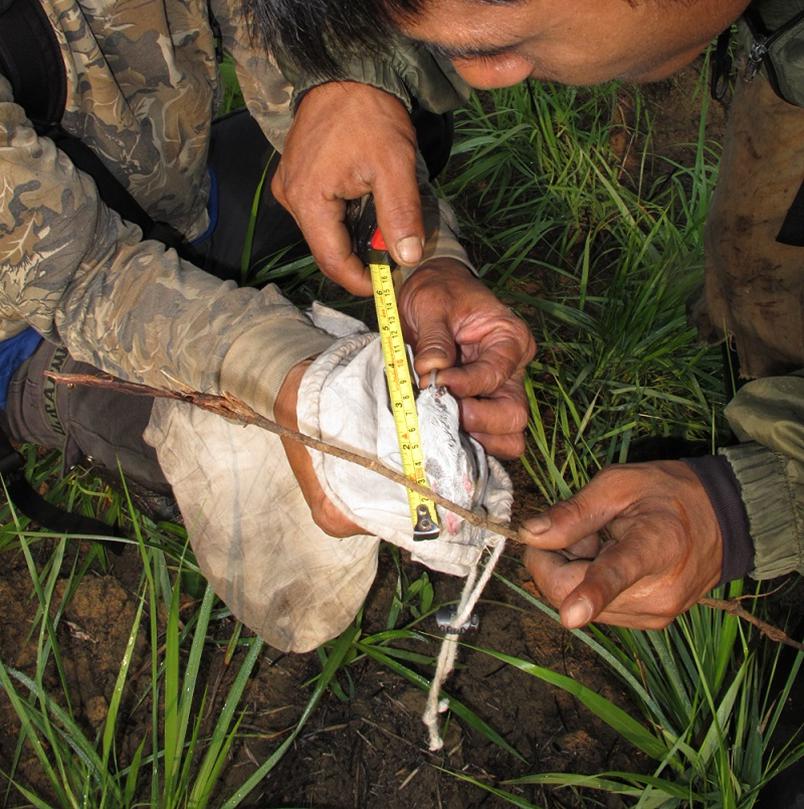Wanlop Chutipong
The project aims to quantify through the use of camera trapping and radio telemetry how small mammalian carnivores use a frequently burned tropical dry forest landscape to inform management actions.

Two field assistants (Karen ethnic) were taking measurement of live-trapped rodent and marked individual in order to estimate abundance.
Small mammalian carnivores (body weight ≤ 15 kg) are a species rich and ecologically important group responsible for significant ecosystem services, particularly seed dispersal and rodent control, but are much less studied compared to the larger, more charismatic carnivores (tigers and leopards). Moreover, they are extremely difficult to study due to their low abundance and cryptic behaviour. While the impacts of fire on vegetation communities have been studied in the region, there has been very little work done on the impacts of fire on animal populations. Radio telemetry and camera trapping are relatively expensive, but when used in combination are by far the most reliable methods of monitoring rare and cryptic species such as these, many of which are nocturnal and range of over relatively large areas. I will employ camera trapping and radio telemetry in 2 major forest types, semi-evergreen forest (SEF) and grassy mixed deciduous forest (MDF) at 2 study sites in the Thung Yai Naresuan Wildlife Sanctuary, western Thailand. Fire is rare in the semi-evergreen forest while it occurs frequently in the MDF. For MDF camera trapping will be conducted before and after fires occur to compare the effects of how the animals respond in terms of ranging patterns and distribution.
The outcomes of this work can be listed as follows; (1) baseline population density estimates of certain species of small carnivores such as Leopard Cats, Large Indian Civets, which can be used for long-term monitoring purposes; (2) a better understanding of the impact of fire on various vertebrates inhabiting dry forest ecosystems in the region; (3) guidelines for fire management for the forest managers which will set clearer procedures on how frequently these fire-dependent habitats should burn and at what spatial scale the burns should occur in order to maintain ecosystem function with respect to rodents, major fruiting trees, and the selected small mammalian carnivores.